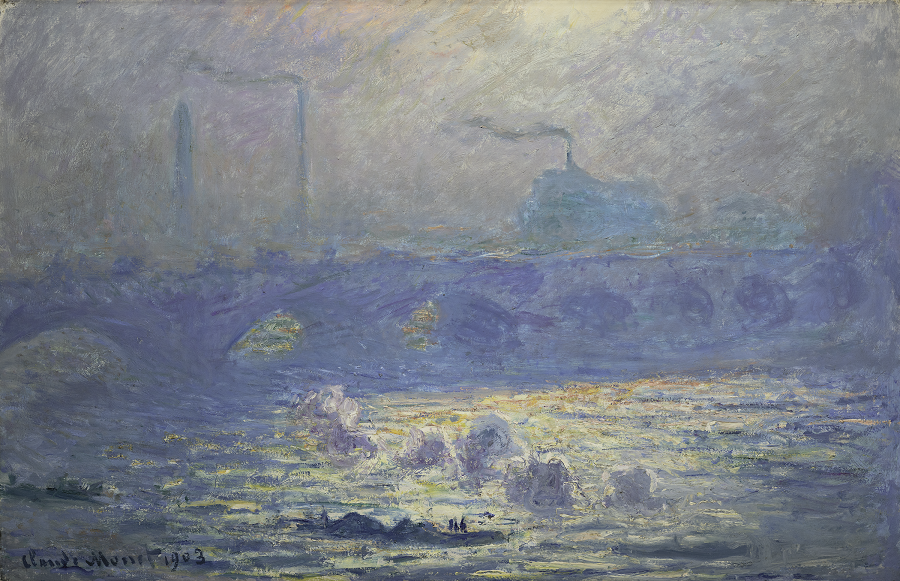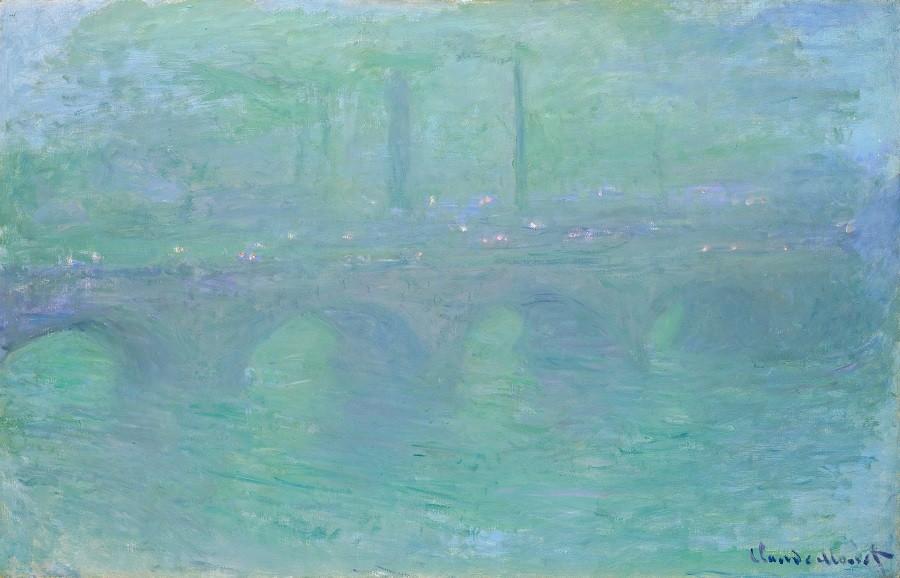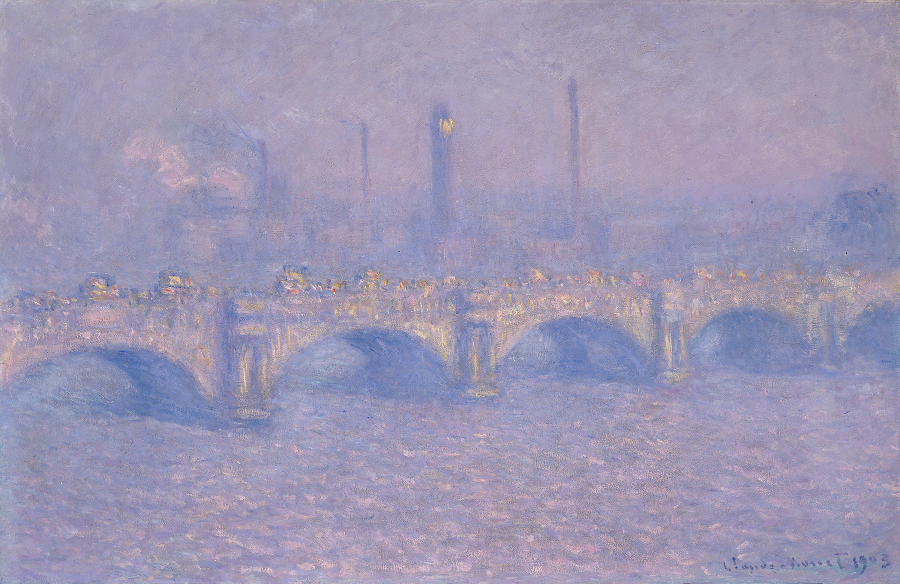
- IMAGE COURTESY THE DENVER ART MUSUEM
- "Waterloo Bridge," 1903.
It isn't often that a showcase of paintings by a renowned artist also offers the opportunity for scientific discussion. French Impressionist painter Claude Monet was known for repeatedly painting specific vistas at different times of day and night, masterfully recording the way light, humidity, and other atmospheric conditions altered the look and feeling of places. He created different series on Rouen Cathedral, on his gardens at Giverny, and on a few specific sites on the Thames River, including the Gothic, imposing Houses of Parliament and the Waterloo Bridge. His diverse body of work on the latter site is the subject of "Monet's Waterloo Bridge: Vision and Process," on view at the Memorial Art Gallery through January 6, 2019.
The exhibition showcases eight of Monet's 40 paintings of the Waterloo Bridge, including the MAG's own jewel-like version, "Waterloo Bridge, Veiled Sun," and seven other versions borrowed from North American sister institutions: the National Gallery of Art, the Art Institute of Chicago, the Worcester Art Museum, the Carnegie Museum of Art, the Denver Art Museum, the Baltimore Museum of Art, and the Davis Museum at Wellesley College.
The gilt-framed canvases form a crescent around one section of the Docent Gallery, providing viewers a great opportunity to study and compare the different paintings.
Though each painting is luminous in its own right, some of the works are grittier views of the urban site while others depict the arched structure melting into near-fairyland atmospheres in unexpected periwinkle or minty hues. Provided info states that "Monet felt that the true subject of his London paintings was the 'envelope,' or all that was between him and the motif of Waterloo Bridge and its surrounds. This envelope included the effects of water, light, fog, and smoke."

- IMAGE COURTESY THE NATIONAL GALLERY OF ART, WASHINGTON, DC
- "Waterloo Bridge, London, at Dusk," 1904.
It's fascinating to see this one view of the bridge look so drastically different depending on the time of day, weather, and smoke from the turn-of-the-century industrial smokestacks spearing the sky in the background. At each painting there's text that gives details on the brushstrokes and different limited color palettes Monet used in each work, based on specialized analysis of the paintings. The exhibit gets into Monet's techniques in hyper-detail with some fun, interactive stations, which are set up in a different part of the gallery. The stations give visitors a chance to tinker with imaging technology and learn about a lot of the science that goes into (carefully) studying works of art.
The show also provides historical context for Monet's paintings, with displays of other examples of his work and that of his contemporaries pulled from the MAG's collection. Andrew Cappetta, the MAG's Assistant Curator of Academic Programs, also curated a companion exhibit: "Seeing in Color and Black-and-White." This section features work by Josef Albers, Victor Vasarely, Jesús Rafael Soto, and others who created abstractions and Op art works that reveal and explore the mechanisms of how we see and perceive.

- IMAGE COURTESY THE MEMORIAL ART GALLERY OF THE UNIVERSITY OF ROCHESTER
- "Waterloo Bridge, Veiled Sun," 1903.